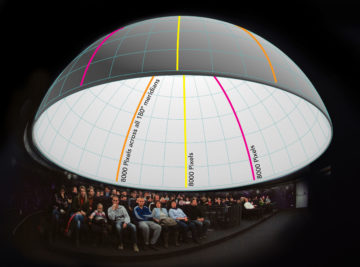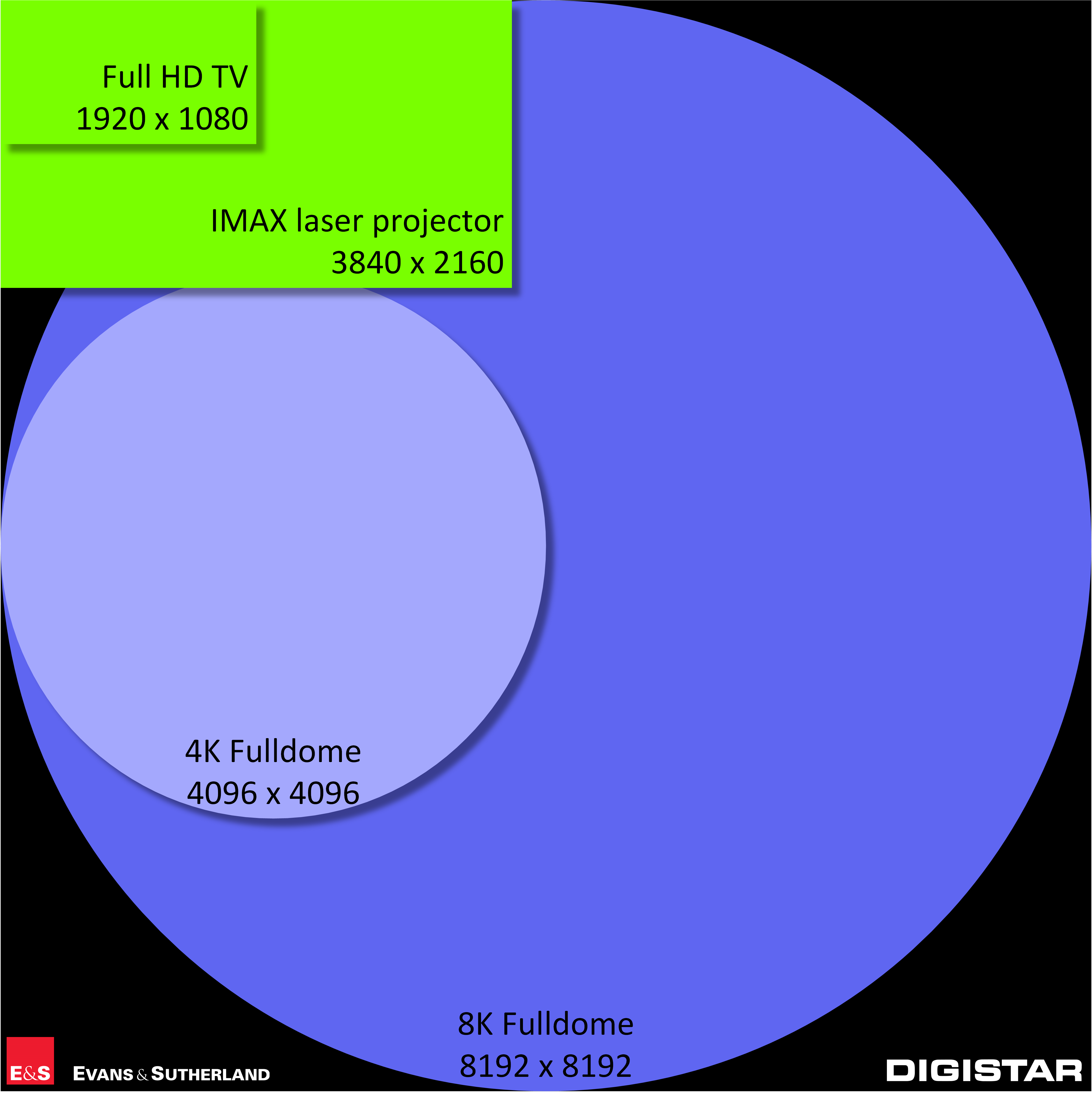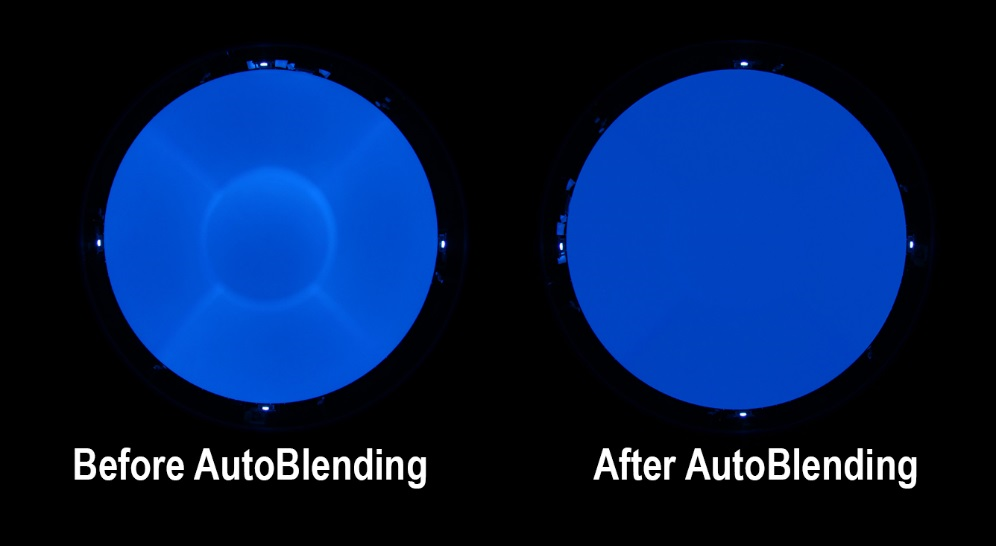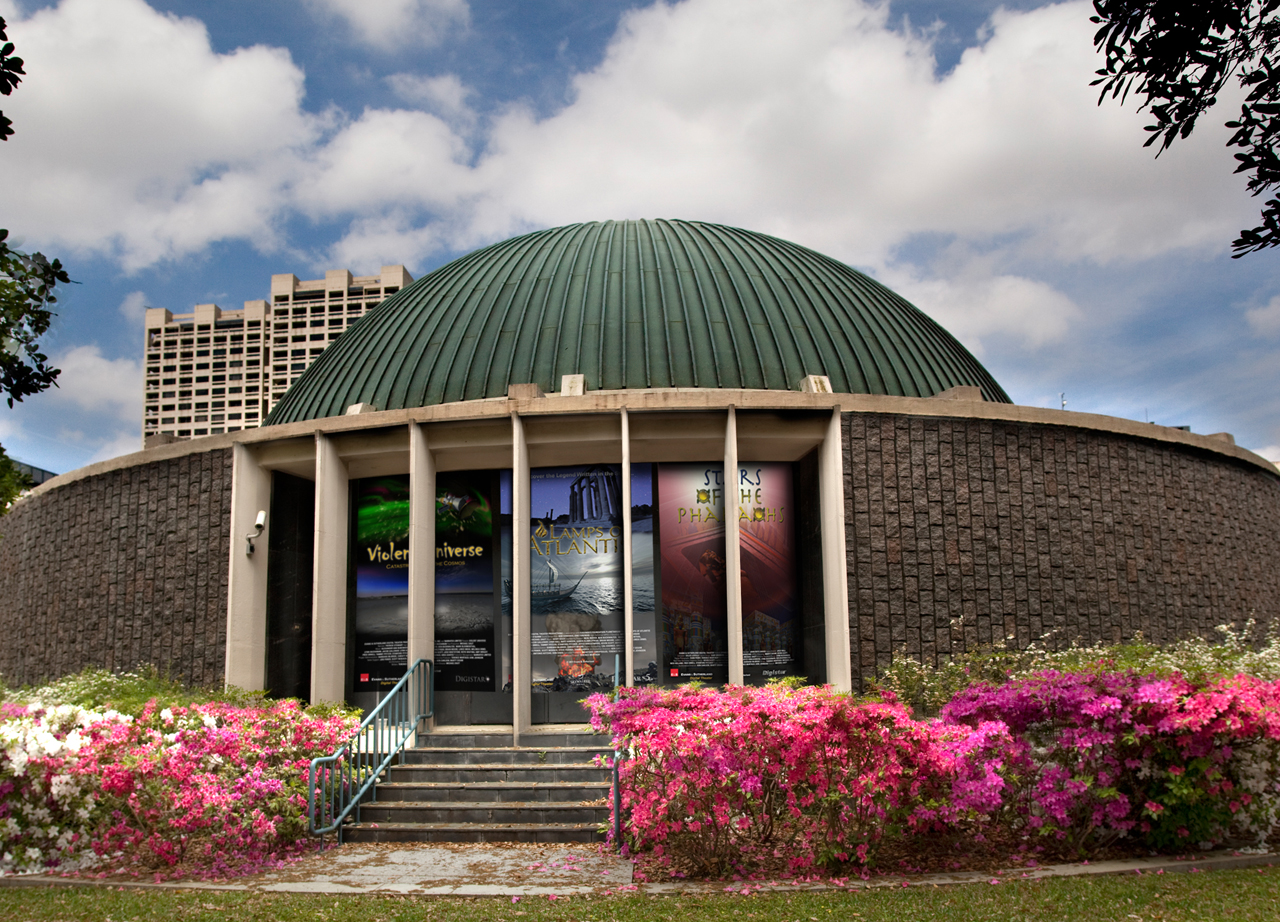8K or “8K”? Yep, it’s confusing…
When speaking of the latest TV technology the term “8K” is now coming to the forefront. Television manufacturers will call their technology “8K” if the TV meets the 8K Association’s Certified Test Specification. In this specification the resolution of the TV must be 7680 x 4320 pixels. An 8K TV will have 33,177,600 unique pixels on its screen.
In the fulldome and planetarium industry the term “8K” is not as well defined; nor is it set in a standard specification. Most people understand a system labeled 8K will have at least eight thousand pixels across any full 180° meridian arc and more than 50 million unique pixels on the dome.
 Vendors chose a variety of ways of designing projection systems which they call 8K. These can be grouped into three main categories:
Vendors chose a variety of ways of designing projection systems which they call 8K. These can be grouped into three main categories:
Good
- Use five or six 4K (4096 x 2160) projectors
- This achieves fulldome resolutions of around 6,500 pixels
- These are called “8K” systems (in quotes) because they are closer to 8K than they are to 4K.
Better
- Use projectors which employ pixel shifting technology
- Typically, these systems use around ten 4K (4096 x 2160) projectors. These projectors do not have true 4096 x 2160 native resolution display panels; but achieve the 4K resolution using pixel shift technology.
- Or they might use two 8K (7680 x 4320) projectors. These projectors likewise, do not have true 7680 x 2160 native resolution display panels; but achieve the 8K resolution using pixel shift technology.
- These types of projectors are typically less expensive than the projectors used in the “Best” category
- This achieves fulldome resolutions of 8,000 or more pixels on any full 180° meridian arc
- These systems are better than the “Good” projection systems because they have the higher resolution; but are not as good as the “Best” projection systems because that resolution is created from pixel shifting instead of actual pixels native to the projector’s display panel.
Best
- Use around ten true 4K (4096 x 2160) projectors
- These projectors do not use pixel shift technology but rather have display panels with a native resolution of 4096 x 2160.
- Achieve fulldome resolutions of 8,000 or more pixels on any full 180° meridian arc
As with any projection system there are always costs and benefits associated with each projection system. Projectors which use pixel shift technology to achieve their 4K resolution look better than standard high-definition projectors (HD or 1080p projectors); but not as good as projectors that have native 4K resolutions in their display panels.
To achieve the very best image quality an 8K projection system would require 8192 x 8192 dome master frames with four times the number of pixels as a 4K dome master.
True8K™ is Truly 8K Resolution
E&S defines a True8K™ system as one that can display at least 8,000 pixels across every meridian on the dome and provides a minimum of 8K resolution everywhere on the dome! A True8K™ system uses projectors whose native display panel resolution is 4K rather than pixel shift technology of lower resolution displays. This creates the highest quality image possible.
The Path to True8K™
An 8K fulldome projection system requires multiple high-resolution projectors whose projected images are precisely aligned as well as color-blended and matched to each other. To create and consistently maintain the visual impact of this incredibly high-resolution system. E&S has developed proprietary auto align and auto blend systems to produce beautifully blended images that can be maintained easily in a theater installation. This creates a seamless fulldome image that looks as if it was displayed by a single projector.
It is also essential to be able to synchronize all the displayed pixels accurately between all computers and projectors, so that every frame of every show appears at exactly the same time without any asynchronous judder or breakup between video streams. To this end, E&S has developed a custom video sync technology with the capability to stream millions of pixels and present them in frame accurate synchronization across multiple graphic servers in the Digistar system, for dependable and precise display of 8K x 8K fulldome frames at up to 60 frames per second! E&S can provide True8K™ systems, both 2D and fulldome 3D, that approach eye limited resolution in the dome for unparalleled image quality.
True8K™ Resolution Benefits
- Smaller & sharper stars
- Increased visual clarity for fulldome shows and giant screen film digital transfers
- Greatly increased brightness for fulldome 2D and 3D
The World’s First True8K™ Theater
In March 2016, E&S installed the world’s first True8K™ system in the Burke Baker Planetarium at the Houston Museum of Natural Science using Digistar with 10 Sony VPL-GTZ280 4K laser phosphor projectors. At the time of its installation it was the highest resolution fulldome system in the world.
Since that time E&S has continued to install 8K and True8K™ systems in many other locations.
Pixel Shifting Technology
If you would like to understand more about pixel shifting technology these references may be useful to you –
- https://www.lifewire.com/4k-video-projectors-explained-4137171
- https://www.projectorpoint.co.uk/4k-resolution-native-vs-upscaled
- http://alienryderflex.com/e-shift/
These links are being provided as a convenience and for informational purposes only; they do not constitute an endorsement or an approval by E&S of any of the products, services or opinions of the corporation or organization or individual.



